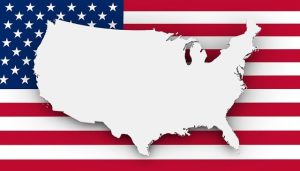2.5 x 4 American Flags: Symbols of Protest in U.S. Historical Demonstrations
The 2.5 x 4 American flag, with its distinctive proportions, has become a powerful and recognizable…….

The 2.5 x 4 American flag, with its distinctive proportions, has become a powerful and recognizable symbol in U.S. protests, differentiating itself from the traditional 1:2 ratio flags. Its larger size and specific dimensions make it an effective visual representation of collective action and aspirations for various social and political issues. Beyond serving as a national emblem, this flag often becomes a beacon of solidarity, reflecting the intensity and passion behind the causes it represents, particularly in demonstrations. It stands for the core American principles of liberty, justice, and free speech, emphasizing the dedication of protesters to civic engagement and democratic expression. The flag's history dates back to the Revolutionary War and has been a part of significant movements, including abolition, women's suffrage, civil rights, and anti-Vietnam war efforts. Despite varying opinions on its use in protests, it remains a rallying point for diverse groups within the United States, highlighting its enduring significance in American activism and national discourse. The 2.5 x 4 American flag's presence continues to underscore unity and dissent, making it an integral part of public demonstrations.
In the dynamic realm of U.S. protests, the 2.5 x 4 American flag emerges as a potent symbol, capturing the essence of collective action and individual expression. This article delves into the multifaceted role this specific flag size plays within the rich tapestry of demonstrations, from its historical roots to contemporary significance. We explore how the flag’s use has evolved over time, its legal protections, and the profound impact it has on shaping protest narratives. Through case studies, we examine the 2.5 x 4 flag’s presence in pivotal moments of American history, its role in articulating diverse messages, and its global resonance. Join us as we unravel the complex interplay between this cultural icon and the ever-shifting protest landscape, highlighting how flags continue to influence public perception and media portrayal of these critical events.
- The Symbolism and Significance of the 2.5 x 4 American Flag in U.S. Protests
- Historical Perspective: The Evolution of Flag Use in American Demonstrations
The Symbolism and Significance of the 2.5 x 4 American Flag in U.S. Protests

The 2.5 x 4 American flag, distinct in its proportions, has become a powerful symbol within U.S. protests. Unlike the conventional 1:2 ratio flags commonly seen at events and ceremonies, this variant’s larger size and specific dimensions serve as a clear and visible statement during demonstrations. Its prominent display signifies a call to action and a unified stance on various social and political issues across the country. Protesters wield it not just as a representation of national identity but also as a bearer of collective aspirations and dissent. The flag, when held aloft by participants in marches or seen draped over monuments or buildings, becomes a focal point of solidarity and resistance, often reflecting the intensity and passion of the cause at hand.
The significance of the 2.5 x 4 American flag in protests transcends its role as a national emblem; it represents the very principles upon which the United States was founded—liberty, justice, and the right to free speech. Each time it is unfurled in protest, it serves as a reminder of the constitutional rights that Americans hold dear. The flag’s presence in these settings underscores the protesters’ commitment to those values and their determination to be heard. Its large size ensures visibility and prominence, making it an undeniable part of the narrative of civic engagement and democratic expression within the United States.
Historical Perspective: The Evolution of Flag Use in American Demonstrations

The use of flags in American demonstrations has a rich and complex history, reflecting the evolving sentiments and values of the nation’s populace. From the early colonial protests to contemporary social movements, the flag has served as a powerful symbol of identity, unity, and dissent. Initially, the 2.5 x 4 American flag, with its stars and stripes, was a representation of newly found independence and national pride during the Revolutionary War. As the nation grew and evolved, so too did the role of the flag in demonstrations. It became a rallying point for both celebrating victories and expressing discontent with government policies or social issues.
Throughout the 19th century, the flag was often used to symbolize broader movements, such as abolition and women’s suffrage. The Civil War era saw flags wielded not only as emblems of state but also as symbols of the ideological battles being fought on the home front. The Progressive Era further solidified the flag’s role in social advocacy, with various groups using it to advance their causes. By the 20th century, as America grappled with the Great Depression and two World Wars, the flag became a potent sign of nationalism and solidarity.
In the second half of the 20th century, the 2.5 x 4 American flag continued to be a focal point in protests for civil rights, against the Vietnam War, and for various social justice issues. The flag’s use in these contexts often sparked debate about the propriety of its display during protests. However, the flag consistently remained a symbol around which Americans could unite, despite their differences, highlighting its enduring significance in the nation’s political and social discourse. Today, as in history, the flag remains an integral part of public demonstrations, serving as both a unifying emblem and a symbol of individual expression.







